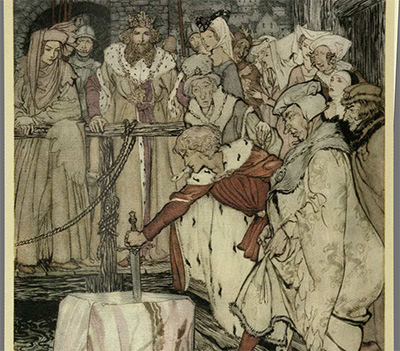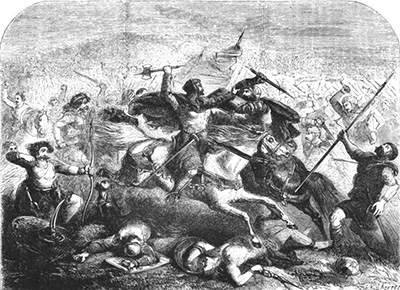How King Arthur became one of the most pervasive legends of all time
"Is our modern appetite for fantasy a reflection of our need to reinvent the past, and bring hope into our present?"
Raluca Radulescu, Professor of Medieval Literature and English Literature, Bangor University explores the evolution of King Arthur as hero and legend.
This article is republished from The Conversation under a Creative Commons license. Read the original article or view the excerpt below.
King Arthur is one of, if not the, most legendary icons of medieval Britain. His popularity has lasted centuries, mostly thanks to the numerous incarnations of his story that pop up time and time again.

Indeed, his is one of the most enduring stories of all time. Though his tale is rooted in the fifth and sixth centuries, it has continued to captivate audiences to this very day. There is just something about the sword in the stone, the knights of the round table, Lancelot, and the wizard Merlin, that have kept us coming back to the various legends of King Arthur for such a long time. [...]
Arthur’s life story is one that has become almost a standard for knightly heroes to aspire to. He is seen as brave, noble, kind – everything that some might say is missing from our modern world.
The epic hero

Few might know that Arthur is a hero whose ancestry goes back to the Brittonic inhabitants of early medieval Wales before the arrival of the Saxons, and not just the kingly figure that appears in later romances. In fact, the Arthur of legend was neither a king, nor the owner of a round table, at least not in the way we use these terms today.
Records about Arthur’s life are few and far between. He emerges in the sixth century in the work of the Welsh monk Gildas, where his victory at Mount Badon is celebrated, but he is not named. It is only in the ninth century Historia Brittonum, composed by another monk, Nennius, that Arthur is named as a “dux bellorum”, a military commander, and his 12 battles are listed.
Much time passed between these early records and the 12th century’s full-blown accounts of Arthur’s reign – in the work of Geoffrey of Monmouth and the French Chretien de Troyes, the writers who truly made Arthur the legendary king we now know – and he took on a variety of roles.
In the Welsh stories, Arthur remains a warrior, often a foil for other heroes’ path to greatness. But in the early French romances, he provided a yardstick for courtly behaviour, as epic battles do not form the backbone of these later stories written on the continent. Geoffrey of Monmouth brought back the leadership and determination of an Arthur who becomes not only a king (on whom 12th century Anglo-Norman kings could model themselves), but also a conqueror – again reflecting a desire for greatness beyond national boundaries. Thus the image of the courtly king, a leader in both war and times of peace, was born.
This article continues over at The Conversation and is republished under a Creative Commons license.
Want more?
Gabrieli Consort & Players brings Henry Purcell's glorious semi-opera King Arthur to life this February. Click here for more information
You might also be interested in
-
-
-
Explore the program notes in advance


